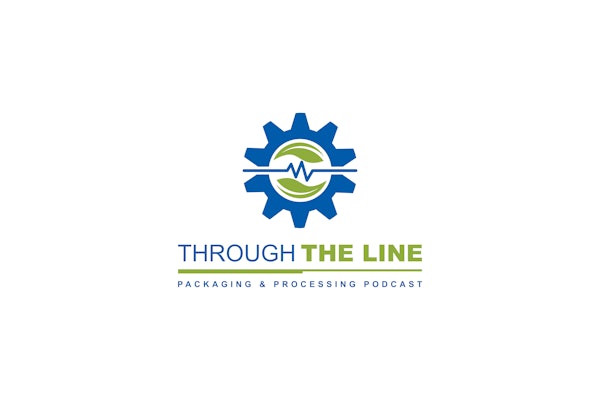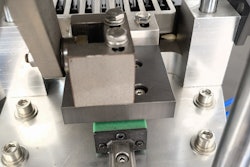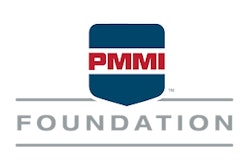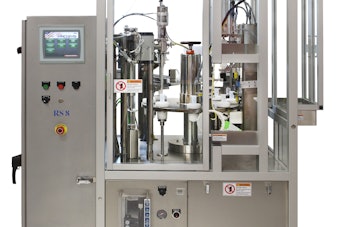Research Director Michael Liard says there's a fundamental difference in RFID for pharmaceuticals versus consumer packaged goods. "Compliance there is customer compliance," he explains of the CPG space. "For pharmaceuticals, it's more about regulatory compliance and e-pedigree here in the U.S., with some companies looking at RFID to satisfy those requirements.
The other side of that is supply-chain visibility—focusing on high-risk, high-value products with your 'blockbuster' drugs and looking at it from the anti-counterfeiting point of view and trying to avoid grey market diversion."
Poorman has been tracking the trend of RFID embedded into packaging including corrugated and plastic bottles, which potentially can reduce costs of RFID label application labeling and the associated labor. "I've seen examples in the pharmaceutical industry putting high-speed encoding together with embedded RFID in packaging. It's an interesting combination because of the potential to make it less expensive to apply RFID."
Another development Poorman notes is the maturing of RFID Gen 2 technology. "One of the things we're expecting to see in 2008 is another burst of innovation. Now that the Gen 2 foundation is solid, people can build on top of that, as well as drive down the costs of RFID."
One example he cites relative to pharmaceutical packaging is temperature logging built into RFID tags. "For example, perishable, heat-sensitive pharmaceuticals can have their temperature tracked and any
exceptions detected." Poorman explains that damage can be noted, even if the product is otherwise unexpired or the problem undetectable. "That's something that could not have been done previously," he adds.
He also sees the convergence of technologies, such as RFID with Global Positioning Systems. "Combining multiple data streams permits better judgment for business decisions," Poorman suggests. "We'll see new things emerge in 2008 that broaden the applicability and the capability of this technology."
Liard sees some confusion clouding RFID's growth. "The pharmaceutical supply chain is complex and challenging, but where is the 'sphere of influence' for RFID? Is it among the manufacturers? Is it with the distributors? Or is it the FDA or the Healthcare Distribution Management Assn? Right now, it's all of the above."
Liard also points to additional confusion in frequency selection, whether HF or UHF. "There's still a frequency question in that environment, there's still a data sharing discussion, and for e-pedigree some are looking at 2-D bar-code symbology or an RFID-2D bar-code hybrid. All these technical discussions are still taking place in the pharmaceutical value chain and all are going to impact RFID at the end of the day."
RFID costs play a role for pharmaceuticals despite their inherent higher value versus many packaged goods. Poorman points out: "Cost will always be an issue. In conversations with pharmaceutical companies, there are some relatively expensive products where there are concerns about diversion or counterfeiting clearly to support the cost of the measures that are taken to prevent those things. By contrast, there is not nearly the incentive for somebody to divert or counterfeit other pharmaceuticals such as generic over-the-counter products.
The business value of adding anti-counterfeiting or anti-diversion measures is much lower for those products, and therefore the cost would have to be much lower to enable there to be a valid business case for that use. Any good business always has its eye on cost, says Poorman.
Liard remains cautiously optimistic and excited about RFID in 2008, while Poorman provides a reflective tone. "I'm encouraged to see companies using packaging technologies, including RFID, to ensure that drugs are what they're supposed to be," Poorman says. "While it's easy to always think about things in terms of the business impact and dollars and cents, let's not forget the human benefit that companies can provide with these technologies."
Listen to podcasts of these interviews.
--By Rick Lingle, technical and RFID editor, Packaging World
The other side of that is supply-chain visibility—focusing on high-risk, high-value products with your 'blockbuster' drugs and looking at it from the anti-counterfeiting point of view and trying to avoid grey market diversion."
Poorman has been tracking the trend of RFID embedded into packaging including corrugated and plastic bottles, which potentially can reduce costs of RFID label application labeling and the associated labor. "I've seen examples in the pharmaceutical industry putting high-speed encoding together with embedded RFID in packaging. It's an interesting combination because of the potential to make it less expensive to apply RFID."
Another development Poorman notes is the maturing of RFID Gen 2 technology. "One of the things we're expecting to see in 2008 is another burst of innovation. Now that the Gen 2 foundation is solid, people can build on top of that, as well as drive down the costs of RFID."
One example he cites relative to pharmaceutical packaging is temperature logging built into RFID tags. "For example, perishable, heat-sensitive pharmaceuticals can have their temperature tracked and any
exceptions detected." Poorman explains that damage can be noted, even if the product is otherwise unexpired or the problem undetectable. "That's something that could not have been done previously," he adds.
He also sees the convergence of technologies, such as RFID with Global Positioning Systems. "Combining multiple data streams permits better judgment for business decisions," Poorman suggests. "We'll see new things emerge in 2008 that broaden the applicability and the capability of this technology."
Liard sees some confusion clouding RFID's growth. "The pharmaceutical supply chain is complex and challenging, but where is the 'sphere of influence' for RFID? Is it among the manufacturers? Is it with the distributors? Or is it the FDA or the Healthcare Distribution Management Assn? Right now, it's all of the above."
Liard also points to additional confusion in frequency selection, whether HF or UHF. "There's still a frequency question in that environment, there's still a data sharing discussion, and for e-pedigree some are looking at 2-D bar-code symbology or an RFID-2D bar-code hybrid. All these technical discussions are still taking place in the pharmaceutical value chain and all are going to impact RFID at the end of the day."
RFID costs play a role for pharmaceuticals despite their inherent higher value versus many packaged goods. Poorman points out: "Cost will always be an issue. In conversations with pharmaceutical companies, there are some relatively expensive products where there are concerns about diversion or counterfeiting clearly to support the cost of the measures that are taken to prevent those things. By contrast, there is not nearly the incentive for somebody to divert or counterfeit other pharmaceuticals such as generic over-the-counter products.
The business value of adding anti-counterfeiting or anti-diversion measures is much lower for those products, and therefore the cost would have to be much lower to enable there to be a valid business case for that use. Any good business always has its eye on cost, says Poorman.
Liard remains cautiously optimistic and excited about RFID in 2008, while Poorman provides a reflective tone. "I'm encouraged to see companies using packaging technologies, including RFID, to ensure that drugs are what they're supposed to be," Poorman says. "While it's easy to always think about things in terms of the business impact and dollars and cents, let's not forget the human benefit that companies can provide with these technologies."
Listen to podcasts of these interviews.
--By Rick Lingle, technical and RFID editor, Packaging World



















